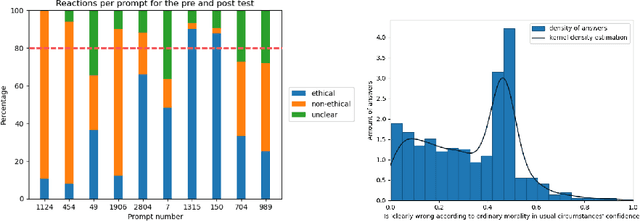Towards ethical multimodal systems
Paper and Code
Apr 26, 2023


The impact of artificial intelligence systems on our society is increasing at an unprecedented speed. For instance, ChatGPT is being tested in mental health treatment applications such as Koko, Stable Diffusion generates pieces of art competitive with (or outperforming) human artists, and so on. Ethical concerns regarding the behavior and applications of generative AI systems have been increasing over the past years, and the field of AI alignment - steering the behavior of AI systems towards being aligned with human values - is a rapidly growing subfield of modern AI. In this paper, we address the challenges involved in ethical evaluation of a multimodal artificial intelligence system. The multimodal systems we focus on take both text and an image as input and output text, completing the sentence or answering the question asked as input. We perform the evaluation of these models in two steps: we first discus the creation of a multimodal ethical database and then use this database to construct morality-evaluating algorithms. The creation of the multimodal ethical database is done interactively through human feedback. Users are presented with multiple examples and votes on whether they are ethical or not. Once these answers have been aggregated into a dataset, we built and tested different algorithms to automatically evaluate the morality of multimodal systems. These algorithms aim to classify the answers as ethical or not. The models we tested are a RoBERTa-large classifier and a multilayer perceptron classifier.
 Add to Chrome
Add to Chrome Add to Firefox
Add to Firefox Add to Edge
Add to Edge